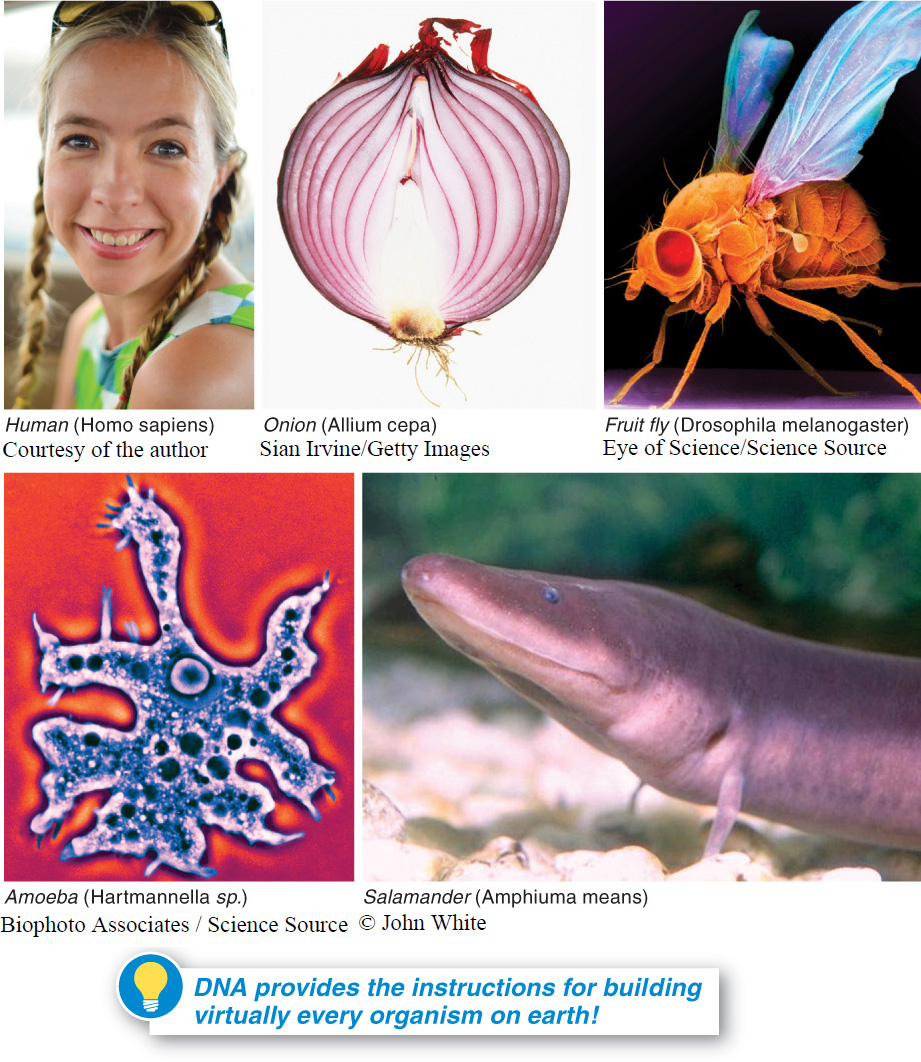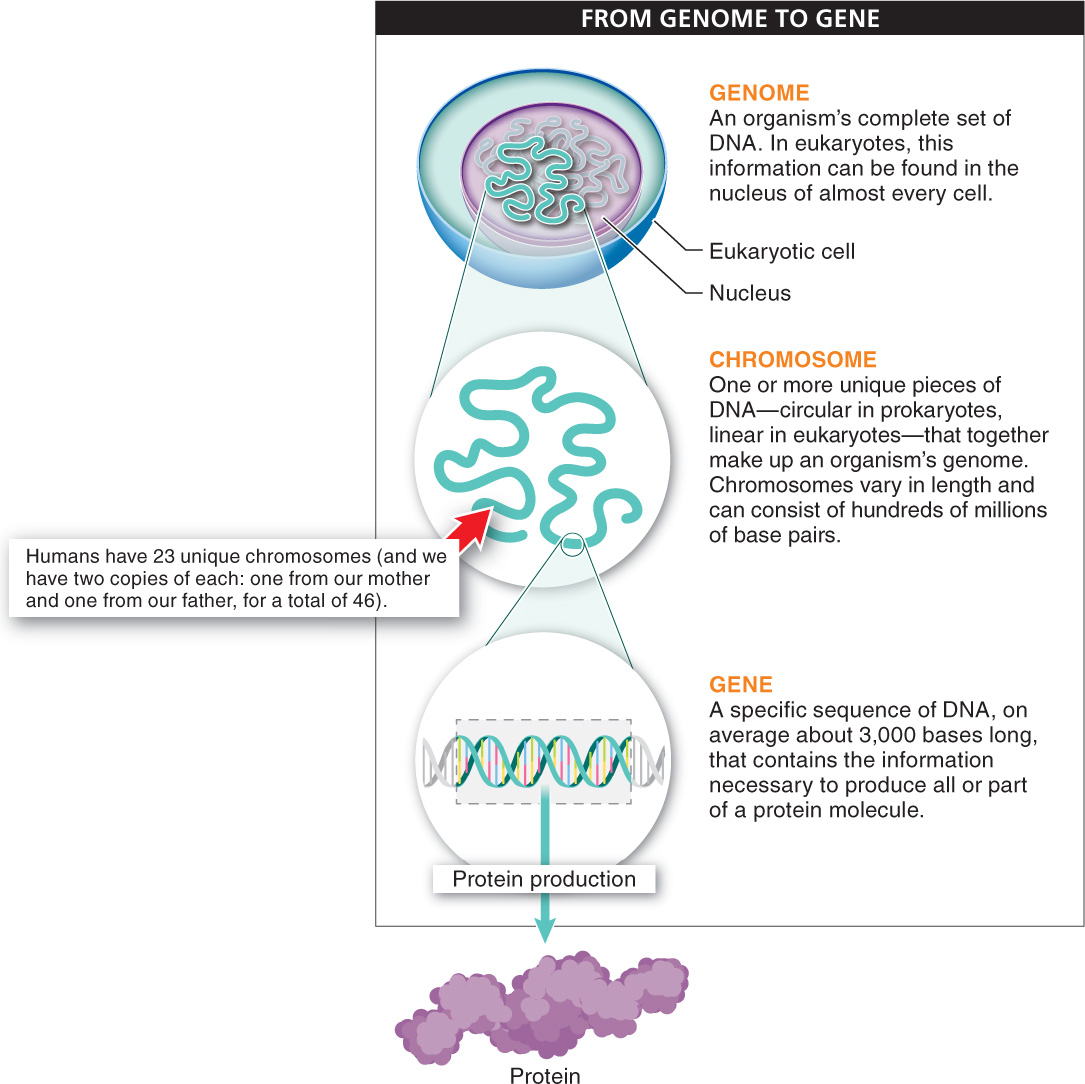5.3: Genes are sections of DNA that contain instructions for making proteins.
One of DNA’s most amazing features is that it embodies the instructions for building the cells and structures for almost every single living organism on earth (FIGURE 5-5). Thus, DNA is like a universal language, the letters of which are the bases A, T, C, and G. (Note that the sugar-
Q
Question 5.2
Why is DNA considered the universal code for all life on earth?

We’ve seen how the structure of DNA is like a spiral staircase. Another analogy may help you understand the information-
The full set of DNA present in an individual organism is called its genome (FIGURE 5-6). In prokaryotes, including all bacteria, the information is contained within circular pieces of DNA. In eukaryotes, including humans, this information is laid out in long linear strands of DNA in the nucleus. Rather than being one super-

183
Within the long sequences of bases in a cell’s DNA molecules are relatively short sequences, on average about 3,000 bases long, that are the actual genes. The location or position of a gene on a chromosome is called a locus (pl. loci). “Gene” may seem like an impossibly nebulous concept, because the word is often used casually in the media as if it were some magical, irresistible, and mysterious force that controls our bodies and behavior. Beyond these vague descriptions, though, the word has a literal meaning. A gene is a sequence of bases (or, more precisely, base pairs) in a DNA molecule that carries the information necessary for producing a functional product, usually a polypeptide or RNA molecule. Nothing more, nothing less.
Remember that a DNA molecule is like a ladder in which half of each rung is any one of the four bases—
Each gene is the instruction set for producing one particular molecule, usually a protein. For example, there is a gene in silk moths that codes for fibroin, the chief component of silk. And, there is a gene in humans that codes for triglyceride lipase, an enzyme that breaks down dietary fat.
184
Within a species, individuals sometimes have slightly different instruction sets for a given protein, and these instructions can result in a different version of the same characteristic. These alternative versions of a gene that code for the same feature are called alleles (FIGURE 5-7)—and function like alternative recipes for chocolate chip cookies. Any single characteristic or feature of an organism is referred to as a trait. A simple hypothetical example will clarify the meaning of these terms. The color of a daisy’s petals is a trait. The instructions for producing this trait are found in a gene that controls petal color. This gene may have many different alleles; one allele may specify the trait of red petals, another may specify white petals, and yet another may specify yellow petals (see Chapter 7). Similarly, one allele for eye color in fruit flies may carry the instructions for producing a red eye, while another, slightly different allele may have instructions for brown eyes. (Ultimately, though, the trait may be influenced not just by the genes an individual carries but by the way those genes interact with the environment, too.)

TAKE-HOME MESSAGE 5.3
DNA is a universal language that provides the instructions for building all the structures in all living organisms. The full set of DNA that an organism carries is called its genome. In prokaryotes, the DNA occurs in circular pieces. In eukaryotes, the genome is divided among smaller, linear strands of DNA. An organism’s DNA pieces are generally called chromosomes. A gene is a sequence of bases in a DNA molecule that carries the information necessary for producing a functional product, usually a polypeptide or RNA molecule.
Arrange the following in order from largest to smallest: base-